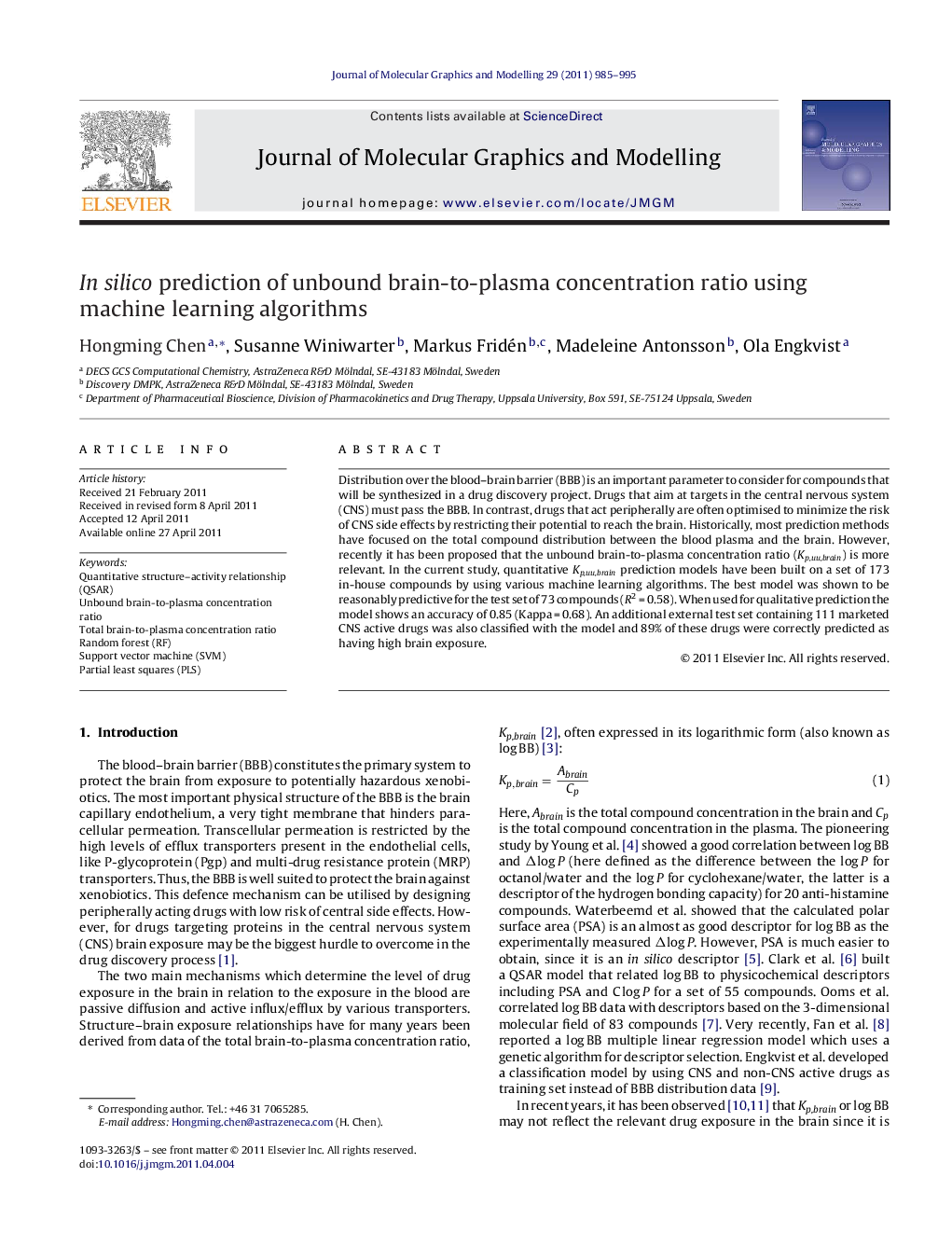| Article ID | Journal | Published Year | Pages | File Type |
|---|---|---|---|---|
| 444460 | Journal of Molecular Graphics and Modelling | 2011 | 11 Pages |
Distribution over the blood–brain barrier (BBB) is an important parameter to consider for compounds that will be synthesized in a drug discovery project. Drugs that aim at targets in the central nervous system (CNS) must pass the BBB. In contrast, drugs that act peripherally are often optimised to minimize the risk of CNS side effects by restricting their potential to reach the brain. Historically, most prediction methods have focused on the total compound distribution between the blood plasma and the brain. However, recently it has been proposed that the unbound brain-to-plasma concentration ratio (Kp,uu,brain) is more relevant. In the current study, quantitative Kp,uu,brain prediction models have been built on a set of 173 in-house compounds by using various machine learning algorithms. The best model was shown to be reasonably predictive for the test set of 73 compounds (R2 = 0.58). When used for qualitative prediction the model shows an accuracy of 0.85 (Kappa = 0.68). An additional external test set containing 111 marketed CNS active drugs was also classified with the model and 89% of these drugs were correctly predicted as having high brain exposure.
Graphical abstractFigure optionsDownload full-size imageDownload high-quality image (141 K)Download as PowerPoint slideHighlights► A robust unbound brain-to-plasma concentration ratio model was built by using various machine learning algorithms. ► The model gives good continuous and classification prediction on both in-house test set and known CNS drug set. ► Important variables which influence the unbound brain-to-plasma concentration ratio were identified and discussed.
